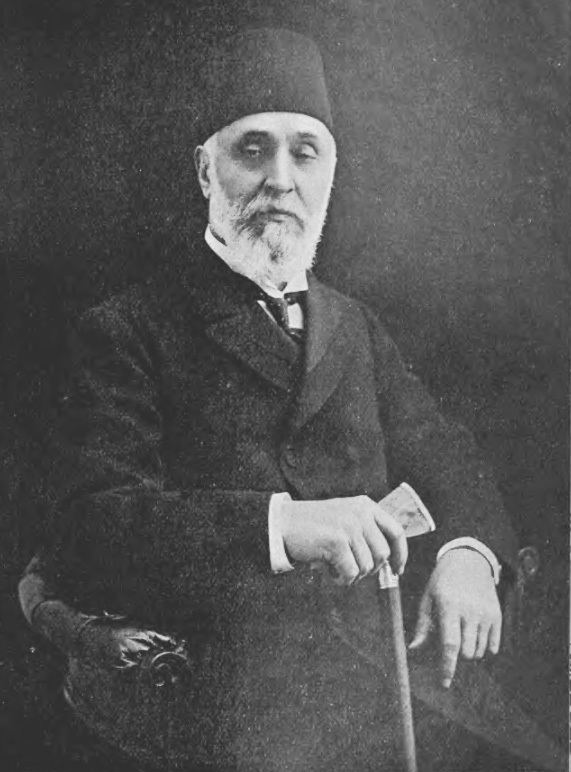Style His Highness Appointer The Sultan First holder Alaeddin Pasha | Residence Bab-ı Ali Formation 1328 Final holder Ahmet Tevfik Pasha | |
 | ||
The Grand Vizier of the Ottoman Empire (Turkish: Vezir-i Azam or Sadr-ı Azam (Sadrazam); Ottoman Turkish: صدر اعظم or وزیر اعظم) was the de facto prime minister of the sultan in the Ottoman Empire, with absolute power of attorney and, in principle, dismissible only by the sultan himself in the classical period, before the Tanzimat reforms, or until the 1908 Revolution. He held the imperial seal and could convene all other viziers to attend to affairs of the state in the Imperial Council; the viziers in conference were called "kubbe viziers" in reference to their meeting place, the Kubbealtı ('under-the-dome') in Topkapı Palace. His offices were located at the Sublime Porte.
During the nascent phases of the Ottoman state, "Vizier" was the only title used. The first of these Ottoman Viziers who was titled "Grand Vizier" was Çandarlı Kara Halil Hayreddin Pasha (also known as Çandarlı Halil Pasha the Elder). The purpose in instituting the title "Grand Vizier" was to distinguish the holder of the Sultan's seal from other viziers. The initially more frequently used title of vezir-i âzam was gradually replaced by sadrazam, both meaning grand vizier in practice. Throughout Ottoman history, the grand viziers have also been termed sadr-ı âlî ('high vizier'), vekil-i mutlak ('absolute attorney'), sâhib-i devlet ('holder of the state'), serdar-ı ekrem ('gracious general'), serdar-ı azam ('grand general') and zât-ı âsafî ('vizieral person') and başnazır, literally "prime minister" in Ottoman Turkish.
In the late periods of the Ottoman Empire, especially during and after the 19th century, the Grand Vizier began to hold a position almost identical to that of a Prime Minister in other European states. Reforms seen during and after the Tanzimat (1838), the First Constitutional Era (1876–1878), and the Second Constitutional Era (1908–1920) further brought the office of the Grand Vizier in line with the European standard, making the incumbent the head of a Cabinet of other ministers. During the two constitutional eras, the Grand Vizier also served as the speaker of the Senate, the upper house of the bicameral Ottoman Parliament. With the establishment of the Republic of Turkey in 1923, the Prime Minister of Turkey took on the roles of the former office.
